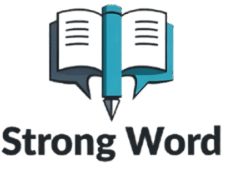20 Hours Free Childcare Offered
In recent years, the cost of childcare has become a significant concern for many families. The need for affordable childcare solutions has never been more pressing, as parents strive to balance work commitments while ensuring their children receive quality early education. In response to these challenges, a new initiative offering 20 hours of free childcare has been introduced, aiming to provide much-needed assistance to families. This initiative is designed to alleviate the financial burden on parents while supporting the development of young children. The programme is available to families with children aged between three and five years. By offering 20 hours of free childcare each week, parents can access quality early childhood education without the associated costs. This service is anticipated to make a significant difference in the lives of many families, allowing parents to work or study while their children benefit from a structured learning environment. The importance of early childhood education cannot be overstated. Research consistently demonstrates that the early years are crucial for cognitive, emotional, and social development. Attending a quality early learning centre can provide children with a strong foundation for future learning and success. The provision of 20 hours of free childcare ensures that more children have the opportunity to benefit from these early educational experiences, regardless of their family’s financial situation. For those interested in taking advantage of this opportunity, it is essential to understand the eligibility criteria and application process. Typically, families need to enrol their children in a participating early childhood centre. Once enrolled, they can access the 20 hours of free childcare each week. This initiative is an excellent way for families to ease the financial strain of childcare and invest in their children’s futures. It is worth noting that while the 20 hours of free childcare is a substantial benefit, families may still be responsible for additional costs outside these hours. Many centres offer the option to purchase extra hours if needed, allowing parents flexibility if they require more than the allocated 20 hours per week. A key aspect of this initiative is its potential to enhance educational outcomes for children. By attending early childhood education centres, children are exposed to new experiences and social interactions that foster learning and development. This setting encourages curiosity and exploration, enabling children to develop essential skills such as communication, problem-solving, and cooperation. The programme’s availability is a critical step towards ensuring equal educational opportunities for all children. For more information about this initiative and how to apply, families can visit 20 hours free childcare available. This website provides detailed guidance on eligibility, enrolment procedures, and participating centres. Parents are encouraged to explore this resource to determine how they can benefit from the programme. In addition to alleviating financial pressures, the 20 hours of free childcare initiative supports broader societal goals. By enabling more parents to return to work or pursue further education, the programme contributes to economic growth and workforce participation. It also promotes gender equality by providing women, who are often primary caregivers, with greater opportunities to engage in the workforce. Ultimately, the introduction of 20 hours of free childcare is a positive step towards supporting families and investing in the future of young children. It highlights the importance of accessible early childhood education and the role it plays in shaping the next generation. As more families take advantage of this initiative, the benefits are expected to extend beyond individual households, contributing to a stronger, more equitable society. To learn more about this initiative and find local centres, visit their website.
